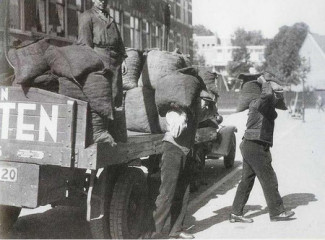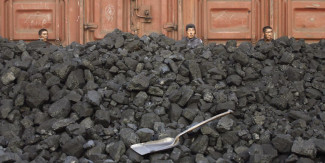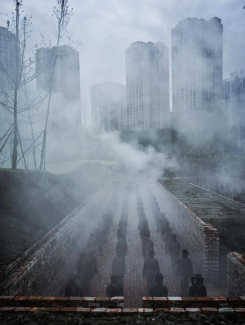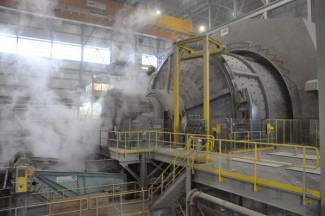
Johns Hopkins UniversityEst. 1876
America’s First Research University
Between medicine, business and politics: Silicosis, a promising 21st century scourge from the remote past

In October 2006, two Chinese victims of silicosis paid a visit to the village of Shakarpur, 80 kilometers from Baroda, an Indian city in the state of Gujarat where regional NGOs had organized a meeting devoted to this disease. The event was a memorable one. Two victims of the new and wild forms of industrialization in the emerging countries were meeting local “traditional” workers having contracted silicosis by polishing agates. It also symbolized how silicosis has become a global burden, and leads to new forms of mobilization against occupational and environmental hazards caused by so-called “industrial diseases”.
Silicosis (the progressive scarring of lungs due to inhalation of crystalline silica dust over a long period of time) is by no way an out-of-date disease, a pathology from the remote past when America, Europe and Australia depended on coal to deliver energy to their factories and heating to their citizens. On the contrary silicosis is, if one dare say, one of the most promising social and environmental diseases of the 21st century. It can only progress at fast pace, in relationship with the industrialization of emerging countries.

Coal and silica dust poison the lungs of Brazilian miners and obscure the sky of Chinese cities. Even in the “old” industrialized world, from Russia to the US, silicosis, which has probably been the most lethal occupational disease in the 20th century, and has acted as a matrix for asbestos scourge, continues to strike miners – but also workers from various sectors, from foundries to the building industry. Silica being the main mineral component of the earth crust, it is an almost universal risk, which is also suspected of bringing about severe chronic diseases, and is considered carcinogen by the International Agency for Research on Cancer.


Silicosis. A World History analyzes the globalization of silicosis hazards, and tells the story of the duel between benefit-driven industry and State productivism on the one hand, and new types of fighters for social justice on the other hand: NGOs acting on the behalf of human rights, women’s associations advocating the cause of their male companions’ in countries where unions are weak or severely controlled, and sometimes single individuals like the former Chinese railway worker Han Dongfang, a veteran of the 1989 Tiananmen Square events.
Understanding the balance of power around this terrible disease, which is both massive by the number of workers affected, and cruel by its painful, incurable and often lethal effects, requires going back to history. Occupational dust hazards have been extremely difficult for medicine to consider. They were, in a way, too universal to become visible. Although medical observations on miners’ diseases had been numerous since the Middle Ages, the pathogenic power of dust was only identified in 19th medicine. From the start, this recognition was not only scientific but involved political stakes. While worker movements demanded their diseases to be compensated by the employers, industry used any blurring factors to minimize or even negate the very existence of occupational hazards. In this battle, the discovery of the tuberculosis bacillus in the 1880s acted as a surprising slowing factor. TB was used by employers’ medical experts to attribute workers’ lung diseases to their “private” habits – as is smoking nowadays. As the book tells, it then took half a century for “silicosis” and a transnational crusade to become a disease on its own, internationally recognized and compensated for having an occupational origin.

The book tells the story of this long battle and of its recurring consequences in the contemporary world. It demonstrates that silica hazards have never been fully recognized, that legislation has remained weak and its implementation has always been questioned. To a wide extent, legal and health regulations on silicosis were born in an imperial and racial context, that of the South African gold mines at the eve of the 20th century. Since then, the industry has used comparable means in the “first world” and in emerging countries to circumvent regulations, as well as under the most varied political regimes: liberal democracies with a private mining sector (USA, Australia) or a nationalized one (UK, France), socialist countries under Soviet rule, corporatist dictatorships.
Silicosis: A World History does not tell a success story. As the current threats in the USA against occupational health regulations and federal agencies illustrate, neither law nor medical knowledge on the disease have ever been a given, and they will probably never be because of the huge financial stakes involved. This book, which proposes an original way of writing world history, is a must for any person interested into labor and environmental stakes, reflection on the relationships between capitalism and the State, science and industry, medicine and law, and on new the forms of political agency.
COMMON QUESTIONS ABOUT SILICOSIS
What is silicosis?
Silicosis is a chronic disease due to the inhalation of crystalline silica dust. When inhaled over a long period of time, particles of silica create nodules within the lungs, which progressively led to their scarification. At the end the patient cannot breathe and needs a bottle of oxygen to move only a few steps. The disease is not curable and often leads to death.
When was silicosis discovered?
Descriptions of silicosis symptoms can be found in the literature since the time of ancient Egypt. Japanese miners from the early modern era had a word, yoroke, to designate it. But the word silicosis was only coined in 1871 by the Italian physician Achile Visconti. This was a quite unfortunate timing. Tuberculosis, whose bacillus was discovered a decade later in Germany, became a dreadful competitor: employers’ medical experts used TB to negate the very existence of silicosis, or attribute it to a side effect of this “private” lung disease, in order to counter workers’ demands for financial compensation.
Who are the victims of silicosis?
Silica being the main mineral component of the earth crust, its dust is produced by most industrial activities. Until the 19th century, its victims were primarily skilled workers such as stonecutters or glassworkers – what remains true in many developing countries. Then, with the growing need for coal energy, the digging of deeper and deeper pits, the use of explosives and of powerful drilling machines (nicknamed “the widow makers”), the workers in the extraction industry, and particularly coal miners, progressively became the most numerous and visible victims of the disease. This picture still sticks to the disease, and has even gained more relevance in emerging countries. This plays a role in hiding the prevalence of silicosis among workers of other industries.
Why is silicosis historically important?
Silicosis is probably the most lethal occupational disease in the history. Its pathogenic effect share many similarities with asbestos, and the two diseases, asbestosis and silicosis, have for a long time be treated in the same medicolegal categories (see illustration below). Because of the number of victims involved, silicosis was nicknamed “the king of occupational diseases” when industrialized countries created this medicolegal category in the beginning of the 20th century. It symbolized a new focus in medical concern, from poisoning diseases (saturnism) to dust ones.

To what extent is silicosis an imperial and racial disease?
Silicosis is tightly associated with colonial and racial domination. The first legislation on silicosis was set up in South Africa in 1911 and the country very much shaped medical knowledge on the disease. In practice, the focus was on monitoring the minority of white miners over the life-course, in order to keep these skilled workers active as long as possible. Black miners, called laborers, were submitted to shorter but more acute dust-exposures, combined with poor housing and living conditions. Once sick, they were discreetly sent back to their villages in South Africa and neighboring countries, under British or Portuguese rule. This dual management of the workforce played a major role in medical knowledge and health regulations of silica hazards, which were organized around life-cycle relatively moderate exposures rather than short and acute ones.
What are the relationships between silicosis and the Cold War?
Regulating silicosis meant finding a way to go on with workers’ exposure to dust hazards, while being aware of how bad it was. One way to solve this paradox was to create “thresholds of exposure” which were supposed to be harmless. During the Cold War, the USA and USSR fought for their definition. Soviet limit-values were generous for the workforce but not respected. US ones were not only driven by medical conceptions but also by what was technically realistic and financially profitable. Both countries also rivaled around the definition of x-rays clichés visualizing the progression of the disease.
What does silicosis reveal on labor regulations?
Silicosis is a test case which defies a linear vision of the progress of science and of social rights. Even though state regulations have played a major role in reducing workers’ morbidity, the history of their implementation shows how much the social and political balance of power among employers, unions, and states, as well as the interplay of “technical” insurance procedures, have perpetually called into question and limited the recognition of silicosis for the workers afflicted with it. Whatever the country, the efficiency of labor law has depended on the agency of the civil society, of a handful of medical experts acting sometimes as lonely “crusaders”, and of the attention provided by the media and by the courts to workers’ scourge. In that matter, liberal democracies provide a much more favorable arena to act for workers’ rights than authoritarian regimes of all kinds.
More generally, what does studying occupational health bring us?
Interest in occupational health has blossomed since the 1990s. An attempt to look afresh at traditional issues in social inequalities, it also very much echoes such present-day concerns as the degradation of the environment, the intensification of the labor process in modern capitalism, and the ascendancy of the major medico-pharmaceutical companies in the arena of public heath.
An examination of workplace health is a way to open new questions on the ability to impose regulations to free market economy. The financial compensation of diseases legally recognized as having an occupational origin has created two paradoxes. First, it allows companies to expose their workers to harmful products and work processes. Second, it turns human health into a management cost. For a century, these contradictions have implied a complex balance of power. The arena where occupational diseases are defined, discussed, monitored, compensated, is a complex configuration involving the management of human capital by companies, the role of medical and legal experts, the strategies of the state and other institutions, such as private-insurance companies, social security systems, NGOs, and transnational organizations such as the ILO, the WHO or the OEDC. By studying this interplay since a century, both in industrialized and emerging and developing countries, the book makes silicosis a crucial test-case for rethinking social and health regulations.
Paul-André Rosental is a professor of contemporary history at Sciences Po and a fellow scholar at the Institut National d’Études Démographiques. He is the author of Destins de l’eugénisme and a coauthor of La Santé au travail: 1880–2006. His latest book, Silicosis : A World History, is available now.


